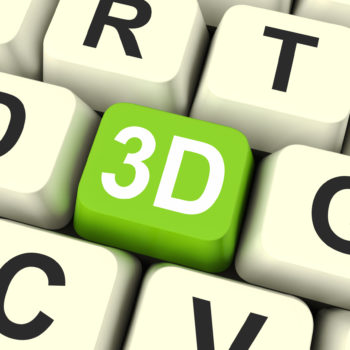3D Technology Will Change the Customer Experience from In-Store to At-Home
by Hugh Williams on 6th Mar 2018 in News

Retailers and e-commerce enterprises are beginning to realise the disruptive potential of 3D technology. In this piece, Andrei Vakulenko (pictured below), chief business development officer, Artec 3D, explains that the challenge is that there hasn’t been a standard set yet when it comes to integrating these technologies. The industry is still very much in a trial phase with many brick-and-mortar stores and online retailers just beginning to experiment with how technologies like 3D scanning, virtual reality, and 3D printing can draw foot traffic and increase sales. However, one thing is clear: 3D technology is poised to influence shoppers in stores, at home, and on their mobile devices.
The digital transformation of brick-and-mortar
The retail industry is plagued by the over production of goods and 3D printing is a process that minimises waste. Many retailers see the opportunity in pairing the two together, especially in the fashion industry. While 3D printing is not quite quick enough yet to be a viable option for in-store production, 3D knitting has generated interest among brands. In fact, Adidas opened a pop-up shop in Berlin that lets customers customise a sweater design and wait while it is knitted onsite. The site has been dubbed the 'Knit for You' store. But the use of on-demand manufacturing is still a very niche application.
While 3D printing may be limited for the time being, 3D scanning has more potential to become a normal occurrence within stores very soon. The iPhone has paved the way for the general public to become comfortable with the notion of allowing their faces or bodies to be 3D scanned. If facial recognition can be used to unlock a phone, it’s not that far off to think that it could become a widely used method of payment. Amazon is already experimenting with cashier-less locations using an app. If a company could scan all items in a shopper’s basket to find the amount due and then scan the customer’s face to find a payment method that’s been saved on file, it could make an easy process even easier.

Andrei Vakulenko, Chief Business Development Officer, Artec 3D
The dressing room is another area of opportunity. Interactive mirror technology, with augmented reality capabilities, allows customers to try on clothing virtually. Shoppers can use the mirrors to send the outfits to their emails or social media, allowing the retailer to build its user data base. Another option would be for the virtual dressing room to have full body scanning capabilities. This would add another dimension to its user data base.
Bringing 3D shopping into your home
A main drawback of shopping online for customers is not being able to physically see or try on what it is you’re purchasing. It is also one of the most frustrating issues for retailers. According to IHL Group, businesses lose an estimated USD$8.4bn (£6.1bn) each year because of online purchases returned due to wrong sizing. If a clothing retailer offered 3D body scanning, it would allow the shopper to more accurately shop at home and eliminate the online guessing game.
By being 3D body-scanned at a physical store, shoppers will know their exact measurements. During the online shopping process, shoppers would be able to easily use a 3D model of themselves to virtually see how the clothes will look on their own body and see exactly how best they fit. Based on a body scan, the retailer could also send potential customers personalised recommendations on clothing that would best fit their body shape.
Online retailers have perhaps been the quickest to adopt the use of 3D tech to push e-commerce sales and recreate the in-store experience. For instance, Wayfair has built its own 3D image library. These models can be viewed at all angles, rather than the limited view that photographs alone can provide. Using augmented reality apps on mobile devices and tablets, online shoppers can see how furniture looks in a real-life setting. Amazon’s new 3D feature allows users to essentially do the same with a wide range of products. Furniture and home décor is a big area of interest as it allows shoppers to not only view the model from all angles, but allows you to view the grain and shape of the material, or the seams. In many instances, when buying furniture online, consumers are playing a bit of a guessing game on what the finish of the material actually looks like. For example, a cheaply built bookshelf might look like great quality wood grain in the professional photo online, however, when it arrives, it is apparent that it is actually a cheaper laminate finish. With a professional 3D scan, this level of quality would be easily noticed.
In the future, you might even be able to view the exact piece of fruit or vegetable you’re buying from online grocery shopping, as 3D scanning allows customers to see the full representation of their produce. At the moment, this concept isn’t the most practical, as it would require a good amount of time to complete scans, render them, and then make them available for the end user to view and approve. However, it is a concept that grocers are exploring and experimenting with.
3D technology is leading the charge in blurring the lines between various retail channels. It is simultaneously reshaping the home shopping experience with the physical shopping experience. Once one retailer shows success with integrating these new technologies, others will follow in a copy-cat fashion. It’ll be interesting to see which technologies and tactics become the new norm.This content was originally published in RetailTechNews.








Follow ExchangeWire